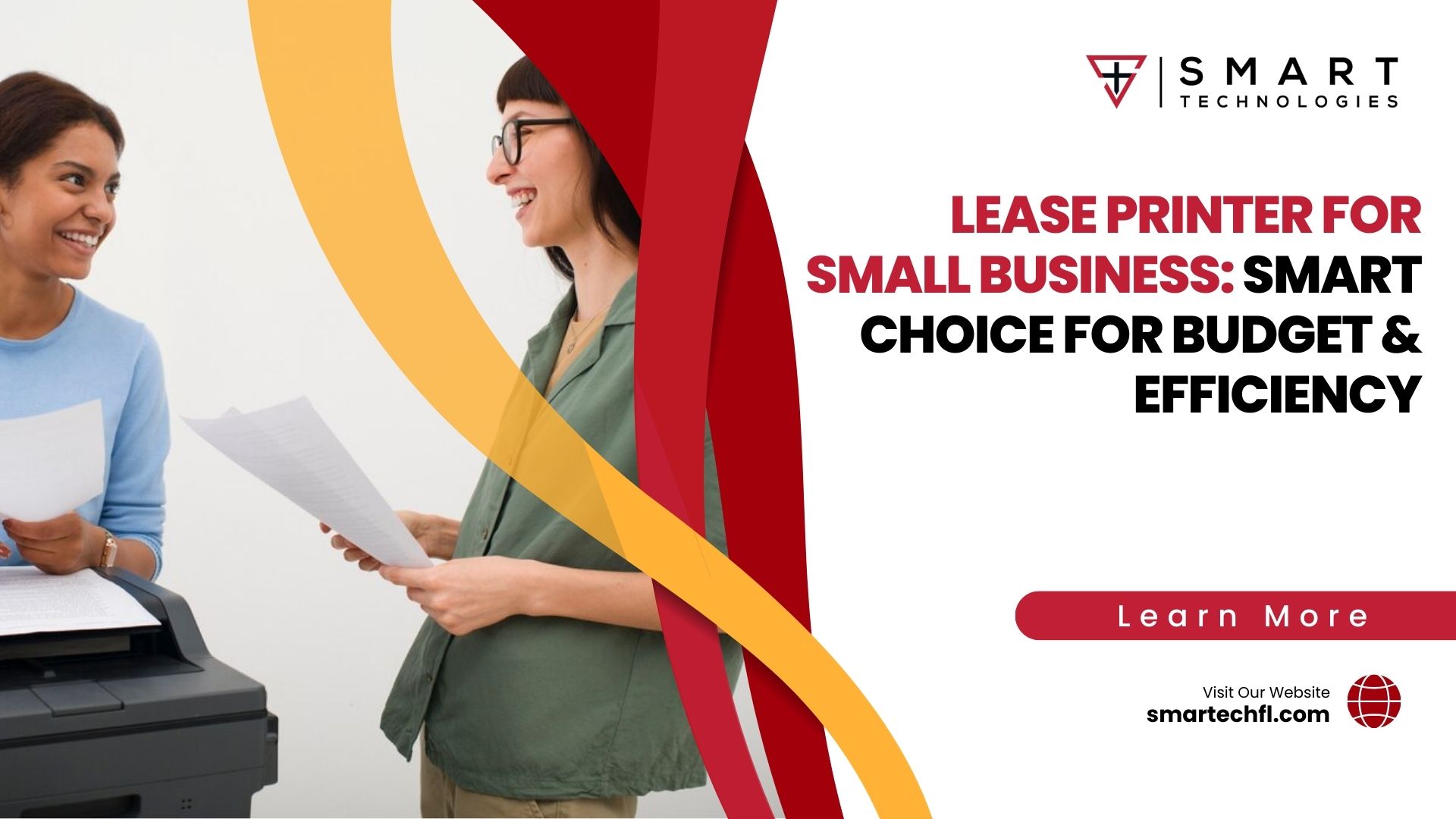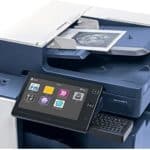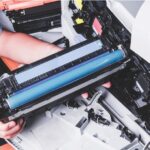Copier Lease Cost: The Hidden Fees and Charges You Need to Know About
The Hidden Fees and Charges You Need to Know
In today’s fast-paced business world, the decision to lease or buy a copier or printer is more critical than ever. Leasing has become a preferred option for many businesses, providing access to the latest technology without the substantial upfront costs of purchasing. However, the decision to lease a copier isn’t as straightforward as it may seem.
Understanding the copier lease cost, along with the hidden fees and charges, is vital for making an informed decision. This understanding helps businesses align their operational needs with their budget, ensuring that they are not caught off guard by unexpected expenses.
For a more in-depth look into these aspects, Leasing vs. Buying: A Detailed Comparison is an excellent resource.

Copier Leasing Pros and Cons
Pros of Copier Leasing
- Keeps Cash in Business: By choosing to lease a copier or multifunction printer, businesses can preserve their capital. Instead of a large upfront payment, they pay a fixed per month fee, allowing for better cash flow management. This flexibility in payment can be particularly beneficial for small and growing businesses.
- Up-to-Date Equipment: Leasing ensures access to the latest office copier technology. It allows businesses to upgrade to newer models without the financial burden of purchasing them outright, ensuring that they always have access to the latest features and capabilities.
- Flexibility in Terms: Lease terms can be tailored to individual business needs. Whether it’s the duration of the lease, maintenance agreements, or upgrade options, leasing offers a level of customization that buying often does not.
Cons of Copier Leasing
- Higher Long-Term Cost: While the per-month payments may seem attractive, the total cost of leasing a copier may exceed the purchase price over the lease term. It’s essential to calculate the long-term costs and compare them to purchasing the equipment outright.
- Locked-In Contracts: Leasing agreements often come with locked-in contracts. Once signed, businesses are committed to the terms, even if their needs change. Early termination or modification of the contract may result in penalties or additional fees.
- No Immediate Ownership: Unlike purchasing, leasing does not confer ownership of the equipment. At the end of the lease term, the copier must either be returned or bought at an additional copier lease cost, which may not always be the most economical option.
What should I consider before leasing a copier?
Before leasing a copier, consider the following factors:
- Your Business Needs: Assess the features, speed, and capacity you need.
- Budget: Understand the full cost of leasing, including potential hidden fees.
- Lease Terms: Review the lease agreement for the duration, maintenance, upgrade options, and end-of-lease terms.
- Vendor Reputation: Research the leasing company’s reputation for customer service and support.
- Future Needs: Consider how easily you can upgrade or change the equipment if your business needs change. By carefully evaluating these factors, you can choose a copier lease that aligns with your business’s needs and budget.
Average Copier Lease Cost
The copier lease cost varies widely, depending on several factors:
- Low Volume to High-End Copier Costs: Basic office copier models may cost as little as $50 per month, while high-end models with advanced features can run up to $500 or more.
- Maintenance and Service Fees: These fees cover regular upkeep, repairs, and toner replacement. Understanding what is included in the service contract can prevent unexpected expenses.
- Sample Leasing Prices: For a standard office and home copier, expect to pay between $100 to $300 per month. High-end models with additional features may cost more.
Hidden Costs and Points to Consider
When considering a copier lease, understanding the hidden copier lease cost and critical points is essential:
- Maintenance and Service Fees: These can significantly add to the overall cost of leasing. It’s crucial to clarify what the service agreement covers, such as toner, repairs, and regular maintenance, to avoid unexpected charges.
- Return on Investment Considerations: Evaluating the long-term value of leasing versus buying requires careful consideration. How does the lease align with business goals? What are the potential savings or costs over time? These questions must be addressed to make an informed decision.
- Availability of Upgrades: The ability to upgrade the copier during the lease term without significant penalties is a valuable feature. Understanding the upgrade options and costs ensures that the business can adapt to changing technology needs.
- Understanding Leasing Terms: Thoroughly reviewing the contract to understand all obligations, including end-of-lease options and any hidden fees, is vital. This understanding helps in avoiding surprises and ensures that the terms align with the business’s needs and expectations.
Leasing a copier offers many advantages, including flexibility, access to the latest technology, and preservation of capital. However, it also comes with potential drawbacks and hidden copier lease cost. By carefully considering all factors, including the long-term costs, lease terms, and availability of upgrades, businesses can make an informed decision that best suits their needs and budget.
Making an Informed Decision
Copier/Printer Leasing vs. Buying: Comparing Costs
When it comes to acquiring an office printer or copier, businesses must weigh the costs and benefits of leasing versus buying. Both options have their unique advantages and disadvantages, and understanding them is essential to make an informed decision.
Costs of Buying a Printer/Copier: Purchasing a new copier or printer requires a significant upfront investment. The cost around buying includes not only the price of the equipment but also maintenance, repair costs, and supplies like a toner. However, owning the equipment outright provides control and flexibility.
Costs of Leasing a Printer/Copier: Leasing, on the other hand, involves a monthly lease payment, which may include maintenance and supplies. The cost of leasing a printer or copier can vary widely depending on the type and features required.
Pros and Cons of Leasing and Buying:
- Leasing Pros: Lower upfront costs, access to the latest technology, flexible lease rates.
- Leasing Cons: Potential higher long-term costs, locked lease period, no ownership.
- Buying Pros: Ownership, potential cost savings over time, no contractual obligations.
- Buying Cons: High upfront costs, responsibility for maintenance and repairs, potential obsolescence.
Leasing Benefits and Drawbacks
Leasing Benefits
- Lower Out-Of-Pocket Expenses: Leasing a copier or printer requires less upfront capital. The cost of leasing a printer or copier is spread over the lease period, allowing businesses to manage cash flow better.
- Flexible Commitment: Leasing offers flexibility in terms of lease agreement duration and terms. If your business needs change, you can upgrade or downgrade the equipment more easily.
- Tax Benefits: Leasing expenses are often tax-deductible as a business expense, potentially reducing the overall costs.
Leasing Drawbacks
- Additional Costs: The cost of leasing a copier or printer may include additional costs not apparent at first glance. Understanding the lease or purchase agreement and what’s included in the monthly payment is crucial.
- Locked Lease Periods: Once committed to a lease period, changing or terminating the contract may result in penalties. It’s essential to ensure that the lease agreement aligns with business needs.
- No Immediate Ownership: Leasing means you’re renting the equipment. At the end of the lease, you must either return the equipment, buy it, or renew the lease, which may not always be the most cost-effective option.
Buying Benefits and Drawbacks
Buying Benefits
- Immediate Ownership: Purchasing a copier outright means immediate ownership. You have full control over the equipment without any contractual obligations.
- Cheaper in the Long Run: While the upfront cost is higher, owning a copier or printer may be cheaper in the long run. Without monthly lease payments, the total costs may be lower over the equipment’s lifespan.
- Additional Equity: Owning the equipment adds to the business’s assets, potentially increasing its value. It also allows for selling or trading the equipment if needed.
Buying Drawbacks
- Higher Upfront Cost: The initial cost of a copier lease or purchase can be substantial, especially for a high-end copier. This investment may strain the budget, particularly for small businesses.
- Challenging Upgrades: Upgrading to a newer model when you own the equipment can be more challenging and costly. Unlike leasing, where you can often upgrade during the lease term, buying requires selling the old equipment first.
- More Responsibility: Ownership means taking on the responsibility for maintenance, repairs, and service costs. This responsibility requires time and resources that leasing might alleviate.
What People Also Ask
What are the average costs of leasing a copier?
The average costs of leasing a copier can vary widely depending on the type, features, and terms of the lease. For a standard office copier, you might expect to pay anywhere from $50 to $500 per month. High-end copiers with advanced features will cost more. These monthly costs often include maintenance and support, but it's essential to understand what's included in the lease agreement. For a detailed breakdown of costs, you can refer to resources like Commercial Copier Costs.
Hidden fees in copier leasing can include charges for exceeding the agreed-upon number of pages per month, costs for specific maintenance or repair services not covered in the service contract, and penalties for early termination or changes to the lease agreement. Understanding the lease terms and what's included in the monthly payment is crucial to avoid unexpected charges. Always read the lease agreement carefully and clarify any ambiguous terms to understand the full cost of the lease.
Is it better to lease or buy a copier?
The decision to lease or buy a copier depends on your business's specific needs, budget, and long-term goals. Leasing offers flexibility, lower upfront costs, and access to the latest technology. Buying provides ownership, potential long-term cost savings, and control over the equipment.
Book a Meeting and Maximize Your Business Communication Efficiency
Conclusion
The decision to lease an office copier or printer or purchase one is multifaceted. It involves considering not only the immediate costs but also the long-term implications, flexibility, tax benefits, and potential drawbacks.
Leasing: If you value flexibility, access to the latest technology, and lower upfront costs, leasing might be the right option. It’s essential to understand the lease agreement and consider the potential long-term costs.
Buying: If you prefer ownership, plan to use the equipment for an extended period, and have the capital for the upfront investment, buying may be the better choice.
In either case, understanding your business needs, budget, and the various factors influencing the cost an office copier or purchase one is essential.
Whether you choose to lease or buy, carefully evaluating your options, understanding the terms, and considering both the immediate and long-term implications will ensure that you get the best deal for your business. It’s not just about how much it costs but also what you’re going to get in terms of functionality, support, and alignment with your business goals.











